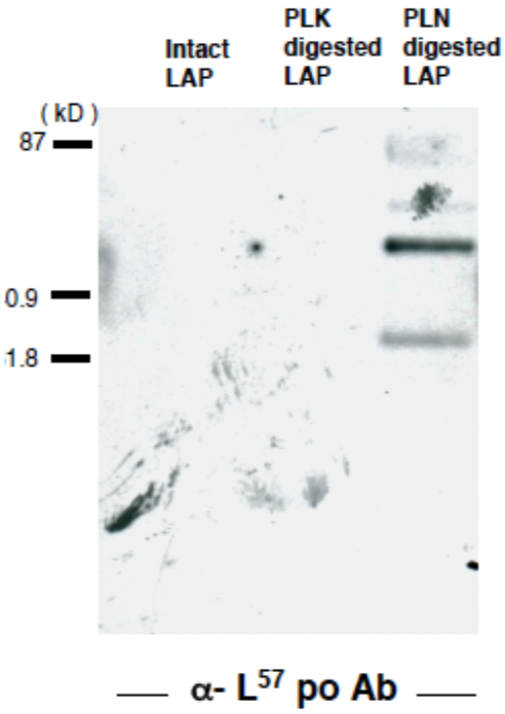
Anti Latent TGF-Beta (Plasmin Degradation Fragment L57) pAb (Rabbit, Affinity Purified)
CAC-RIK-CP-PT57
Product group Antibodies
Overview
- SupplierCosmo Bio USA
- Product NameAnti Latent TGF-Beta (Plasmin Degradation Fragment L57) pAb (Rabbit, Affinity Purified)
- Delivery Days Customer16
- CertificationResearch Use Only
- Scientific DescriptionTGF-beta is produced as a pro-protein in which the 25 kD active TGF-beta is trapped by an N-terminal pro-peptide called Latency Associated Protein (LAP). Upon receipt of certain stimuli a conformational change is induced in a latent complex to release the active TGF-beta from the complex. The resultant TGF-beta binds to cognate signaling receptors and exerts various physiological and pathological activities. This reaction is called TGF-beta activation reaction, which is known to be induced by binding of the latent complex to cell adhesion proteins such as thrombospondin and integrins, and/or by being cleaved by the action of proteases such as serine proteases, cysteine proteases, and MMPs in an organ and context-depending manner. The RIKEN Center for Biomedical Science and Research Center for Liver Cancer Prevention and Research Unit focused on the involvement of the serine protease plasmin and plasma kallikrein in the release and activation of TGF-beta and its involvement in liver diseases. They showed that plasmin and plasma kallikrein cleave, respectively, at 56Lys-57Leu and 58Arg-59Leu within the LAP portion of the latent TGF-beta1 molecule. The anti-TGF-beta1 LAP-degradates (LAP-D) antibodies are useful to investigate the molecular mechanism of TGF-beta activation and its related diseases including liver fibrosis/cirrhosis and liver degeneration. Source: Professor Koichi, National Institute of Advanced Industrial Science and Technology RIKEN Biomedical Science Research Center Liver Cancer Prevention Research Unit References: Kojima, S. et al., Detection and prevention of hepatic fibrosis targetingTGF-beta activation reaction Hepatology 46(4): 712A (2007).
- UNSPSC12352203

